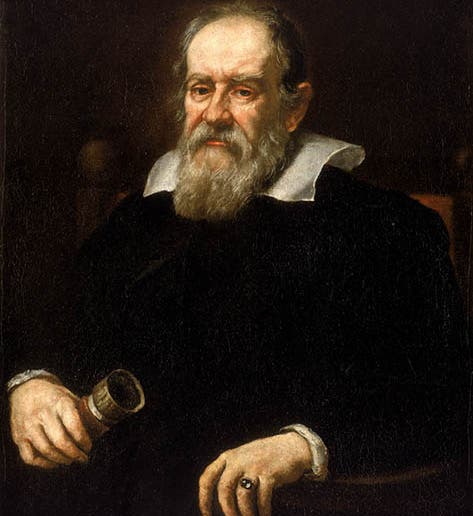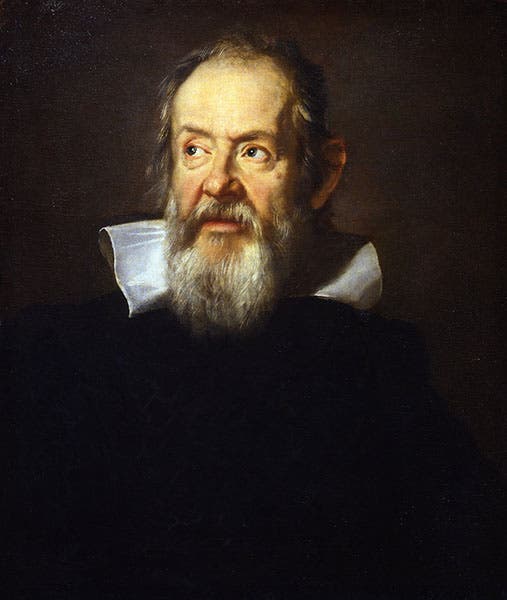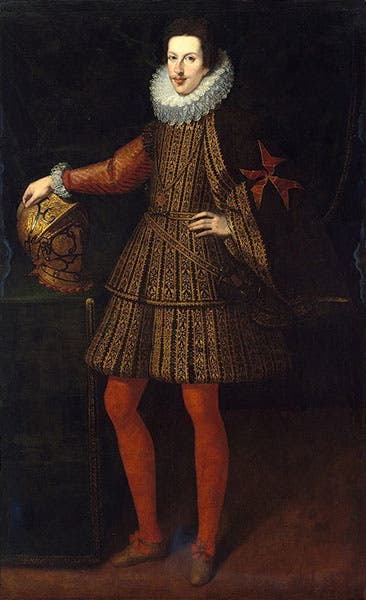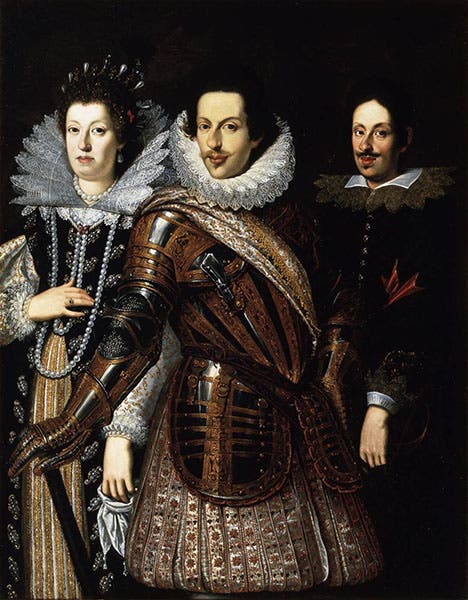Scientist of the Day - Justus Sustermans
Justus Sustermans, a Flemish portrait painter working in Italy, was born Sep. 28, 1597. Sustermans was court painter for the Medici family of Florence for many decades, and dozens of his portraits survive in Italian museums. But Sustermans is best known in the history of science for two portraits that he did of Galileo Galilei. Both were painted in the late 1630s, when Galileo was in his 70s and had been tried by the Church for the heresy of advocating heliocentric astronomy. One painting, done about 1640, shows Galileo seated in a chair, holding a telescope, and gazing fixedly at the viewer. Several versions of this painting survive, but it is thought that the one in the National Maritime Museum in Greenwich is the original. It is certainly a strong and arresting portrait (first image).
Sustermans’ other portrait of Galileo is even more compelling, since it captures a slightly younger Galileo with his eyes lifted to the heavens, which is how Galileo ought to be depicted. The original version of this portrait is in the Uffizi Gallery in Florence; it was painted about 1636 (second image). There is a contemporary copy of that painting in the National Maritime Museum, giving them a stunning twosome of Sustermans Galileo portraits.
Sustermans also painted nearly every member of the Medici family who lived between 1615 ands 1670, and there were a lot of them. If we consider the ones who played a role in Galileo’s life, there is a Sustermans portrait of Cosimo II, the Grand Duke of Tuscany between 1609 and 1619 (third image, above), who invited Galileo to Florence and after whom Galileo wanted to name the newly discovered moons of Jupiter (Galileo ended up naming them the Medicean stars, after the entire Medici family).
Sustermans also painted Cosimo II’s successor, Ferdinando II, who harbored Galileo after he was silenced by the Inquisiton in 1616 (fourth image, above). The turban was a momentary and playful affectation of the young Grand Duke. And Sustermans painted Ferdinando’s younger brother, Leopoldo, who had a keen interest in experimental science and who founded the famous Cimento Academy in Florence, where the work of Galileo was continued by his disciples (fifth image, below).
One of the oddest paintings by Sustermans, yet one of the most often reproduced, is a triple portrait of Cosimo II de’ Medici, his wife Maria Maddalena of Austria, and their son Ferdinando II (sixth image, below). Its oddness comes from the fact that the triple portrait is comprised of three individual portraits, painted at three different times, and then uncomfortably pieced together into one scene. Cosimo II would seem to have been painted about 1618, Maria Maddalena about 1627, and Ferdinando II about 1636. Yet if you are not bothered by the awkward body postures and the fact that Cosimo seems younger than his son, it is a compelling painting.
One would think that Sustermans would have portrayed the other important Medici figure in Galileo’s life, Christina of Lorraine. Mother of Cosimo II, and often referred to as the Grand Duchess of Tuscany, she provided the occasion for Galileo’s Letter to the Grand Duchess Christina of 1615, in which he first offered his suggestions as to how Scripture ought to be read in order to reconcile Copernicanism and Holy Writ. This letter helped provoke the condemnation of Copernicanism by the Church in 1616. Yet if a Sustermans portrait of Christina exists, I was unable to locate it.
Sustermans did not spend as much time painting self-portraits as, say, Rembrandt, but there is at least one, in the Uffizi Gallery, if we can believe Wikipedia (I could not find the portrait on the Uffizi website). But I suspect the attribution is correct. The subject looks like I would expect a Medici court painter to look (seventh image).
Dr. William B. Ashworth, Jr., Consultant for the History of Science, Linda Hall Library and Associate Professor emeritus, Department of History, University of Missouri-Kansas City. Comments or corrections are welcome; please direct to ashworthw@umkc.edu.












